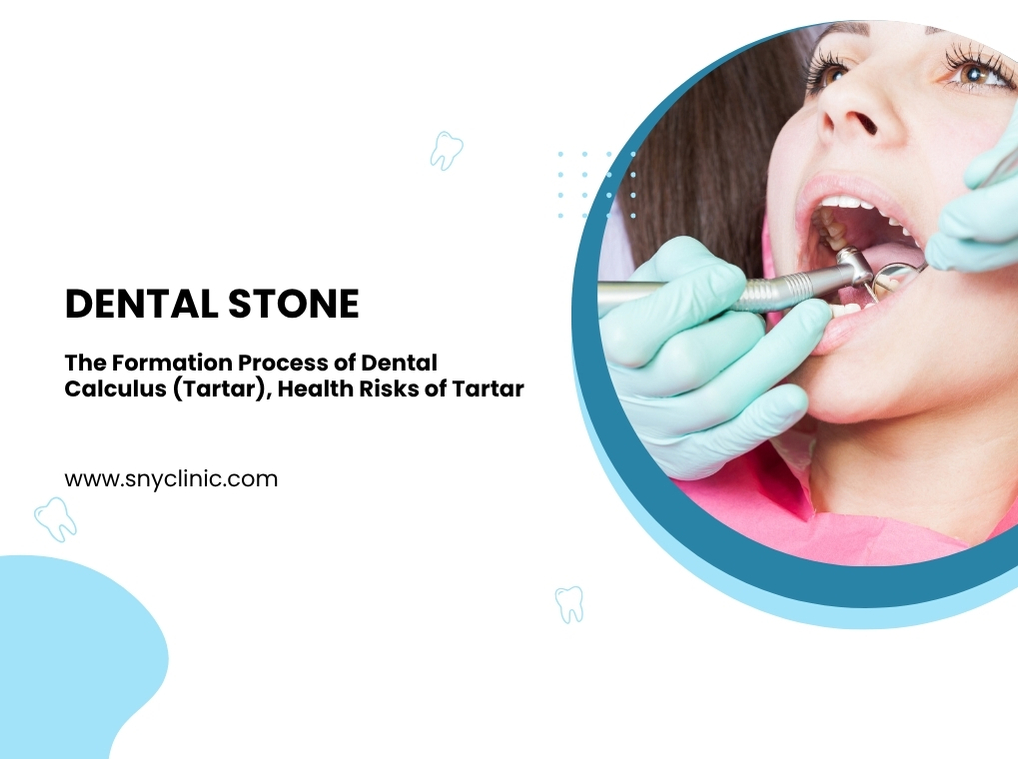
The Truth About Dental Calculus and Ways to Prevent It
The Truth About Dental Calculus and Ways to Prevent It
The Truth About Dental Calculus and Ways to Prevent It
Have you ever noticed that rough, hard layer on the back of your teeth when you run your tongue over them? No matter how much you brush, it doesn’t go away—and over time, it darkens in color. This formation, commonly known as tartar, is dental calculus. But how does this unwanted guest settle on our teeth, and is it really possible to get rid of it?
In this article, we take a completely original approach to exploring the formation process of dental calculus, the health risks it poses beyond aesthetic concerns, and the most effective ways to eliminate it.
The Invisible Enemy: How It All Begins
Dental calculus does not form overnight. It all starts with a sticky, invisible biofilm known as bacterial plaque.
Our mouths are naturally home to bacteria. Foods rich in carbohydrates and sugar provide energy sources for these bacteria. As they break down the food, they release acids that can damage tooth enamel. These bacterial colonies combine with saliva and food particles and adhere especially to interdental areas and the gum line. This sticky, colorless layer is called plaque.
If this plaque is not removed daily with an effective oral care routine, it creates the perfect environment for the next stage.
Calcified Plaque: The Process of Tartar Formation
The bacterial plaque left on our teeth interacts with minerals (mainly calcium and phosphate) naturally present in our saliva. This process is similar to calcification. The soft, easily removable plaque absorbs these minerals, crystallizes, and hardens.
The result is dental calculus—a substance tightly adhered to the tooth surface, ranging in color from yellow to brown.
Factors that accelerate calculus formation vary from person to person:
• Oral Hygiene Habits: Inadequate or improper brushing and neglecting to floss invite plaque accumulation.
• Individual Predisposition: Some people naturally have more mineral-rich saliva, which causes plaque to harden faster.
• Tooth Position: Crowded teeth create hard-to-clean areas, forming ideal pockets for plaque.
• Diet: High sugar and processed carbohydrate intake increases plaque-producing bacterial activity.
• Tobacco Use: Tobacco products help plaque adhere more firmly to teeth, triggering tartar formation.
More Than a Cosmetic Issue: Health Risks of Tartar
The unsightly appearance of tartar is just the tip of the iceberg. The real danger lies in its porous and rough surface. This texture offers an ideal environment for new bacteria to cling to and multiply, leading to serious health risks:
• Gingivitis (Gum Irritation): Tartar in constant contact with the gums causes chronic irritation. This leads to swelling, redness, and bleeding even with minimal contact.
• Persistent Bad Breath: Billions of bacteria housed on tartar release volatile sulfur compounds, causing continuous and unpleasant halitosis.
• Periodontitis (Advanced Gum Disease): If gingivitis is not controlled, the infection spreads deeper into the gum tissue and the supporting bone, causing gum recession, bone loss, and eventually, the loosening and loss of even healthy teeth.
Why You Shouldn’t Try to Fix It at Home
Pointed scalers sold online or so-called “natural” acidic mixtures are absolutely unsafe for removing tartar. Such unprofessional interventions can:
• Cause irreversible scratches and damage to enamel, the tooth's outer protective layer.
• Cut the gums, leading to bleeding and exposure to infection.
• Push tartar below the gum line while trying to break it, worsening the issue.
Remember, tartar cannot be removed with toothpaste or a toothbrush.
The Only Safe Solution: Professional Tartar Cleaning (Scaling)
Known as scaling, this procedure is performed by dental professionals to remove tartar deposits without damaging the teeth.
1. Scaling: The dentist uses ultrasonic tools that operate with sound waves and specially shaped hand instruments (curettes) to carefully remove all tartar from tooth surfaces and gum pockets.
2. Polishing: After cleaning, a special polishing paste and a rotary brush are used to smooth the tooth surfaces. The smoother the surface, the harder it is for new plaque to cling.
The Best Strategy Is Prevention
Dental calculus is largely controllable with the right habits. The formula for maintaining a healthy smile is simple:
• Effective Cleaning: Brush twice daily, ensuring all surfaces of each tooth are cleaned, and floss or use interdental brushes daily to clean between teeth—where plaque accumulates the most.
• Professional Care: Visit your dentist every 6 months for regular check-ups and to remove tartar from areas you can’t reach at home.
Never forget that your health starts in your mouth. Taking care of your teeth is not just an investment in a bright smile—it’s one of the most valuable investments in your overall health.




